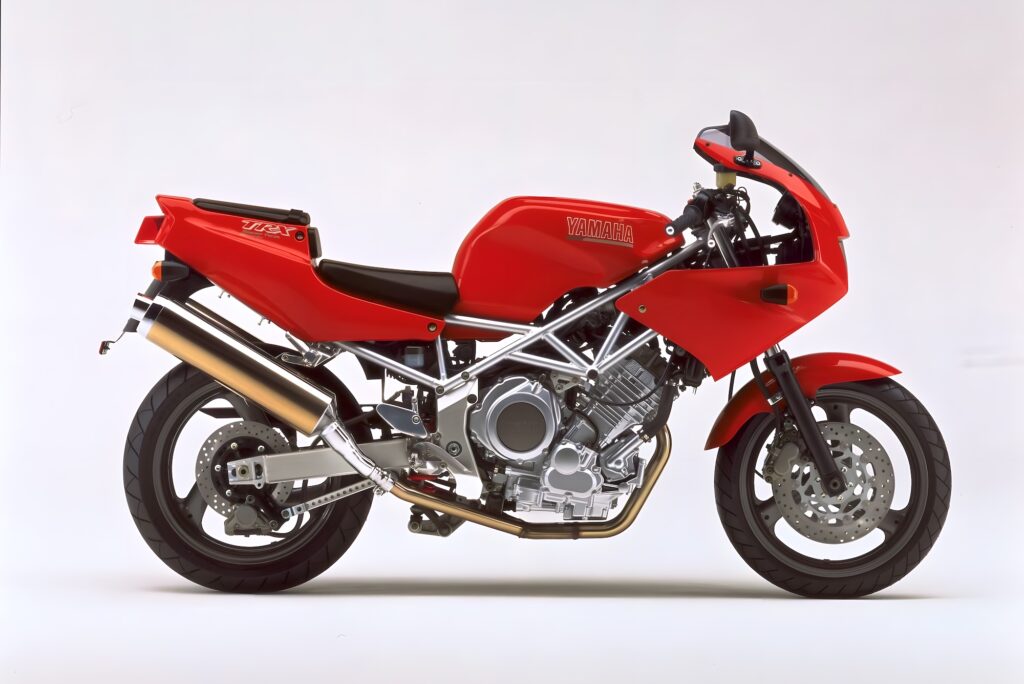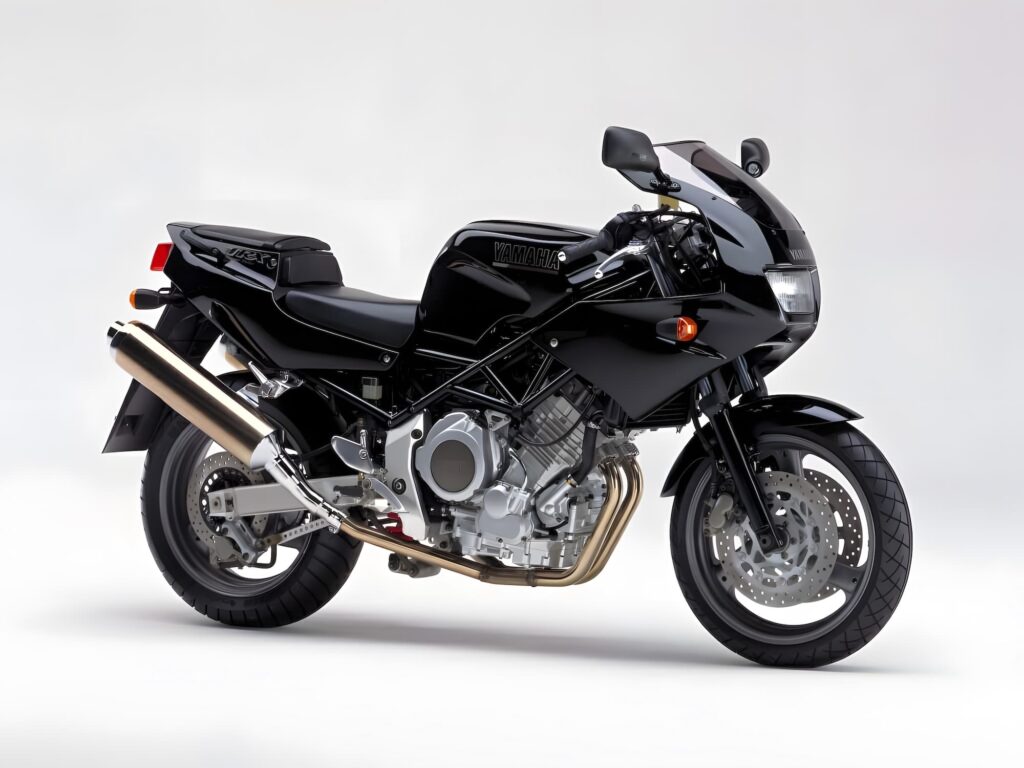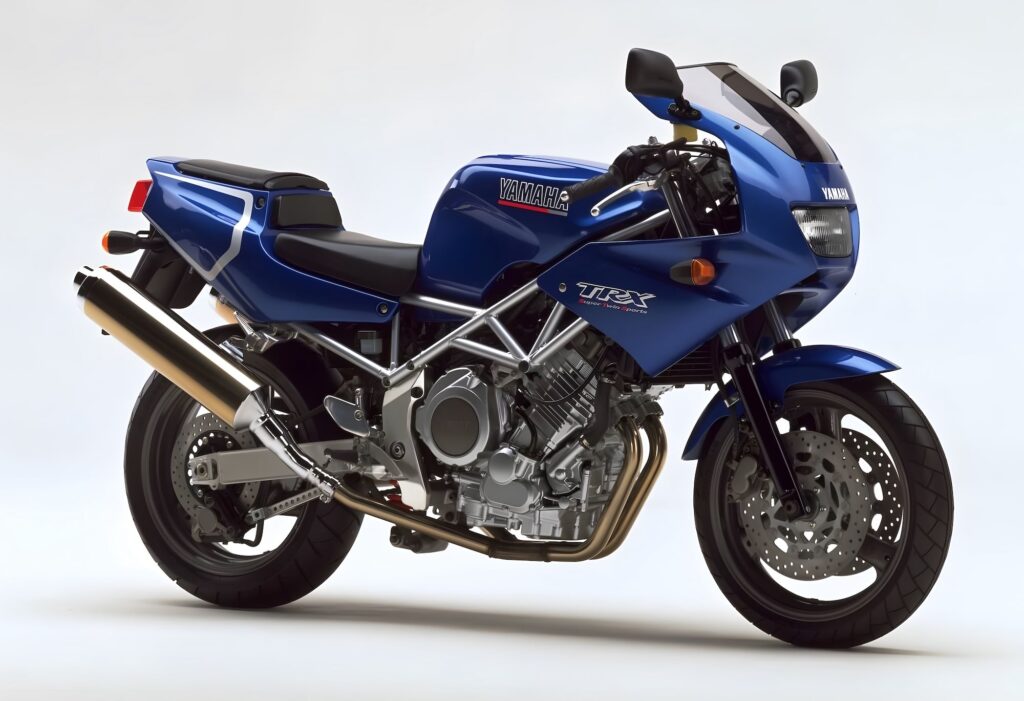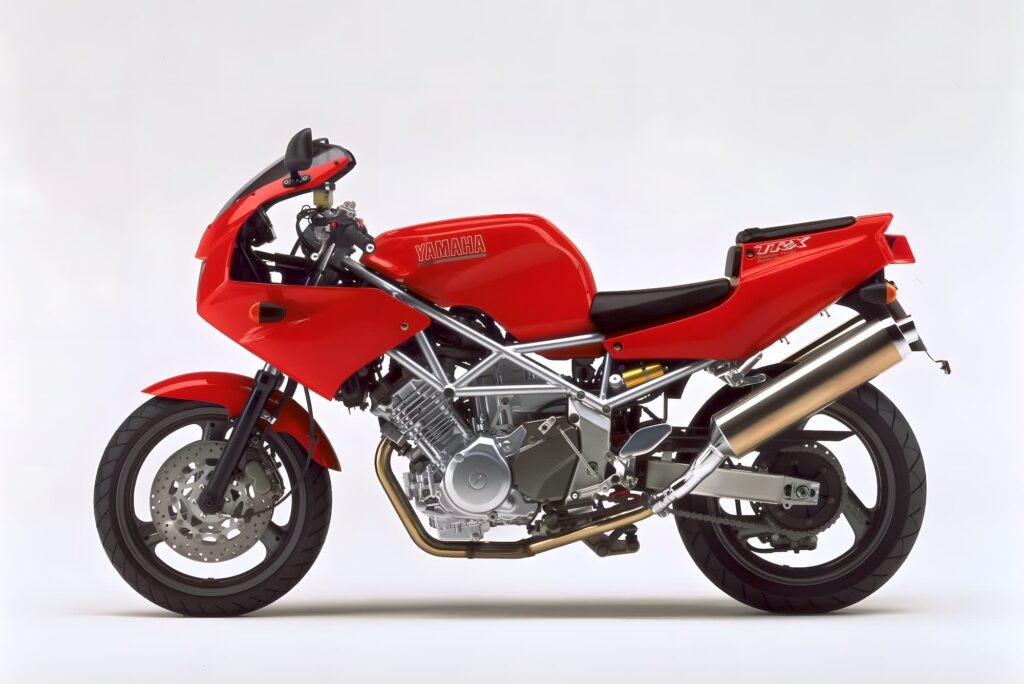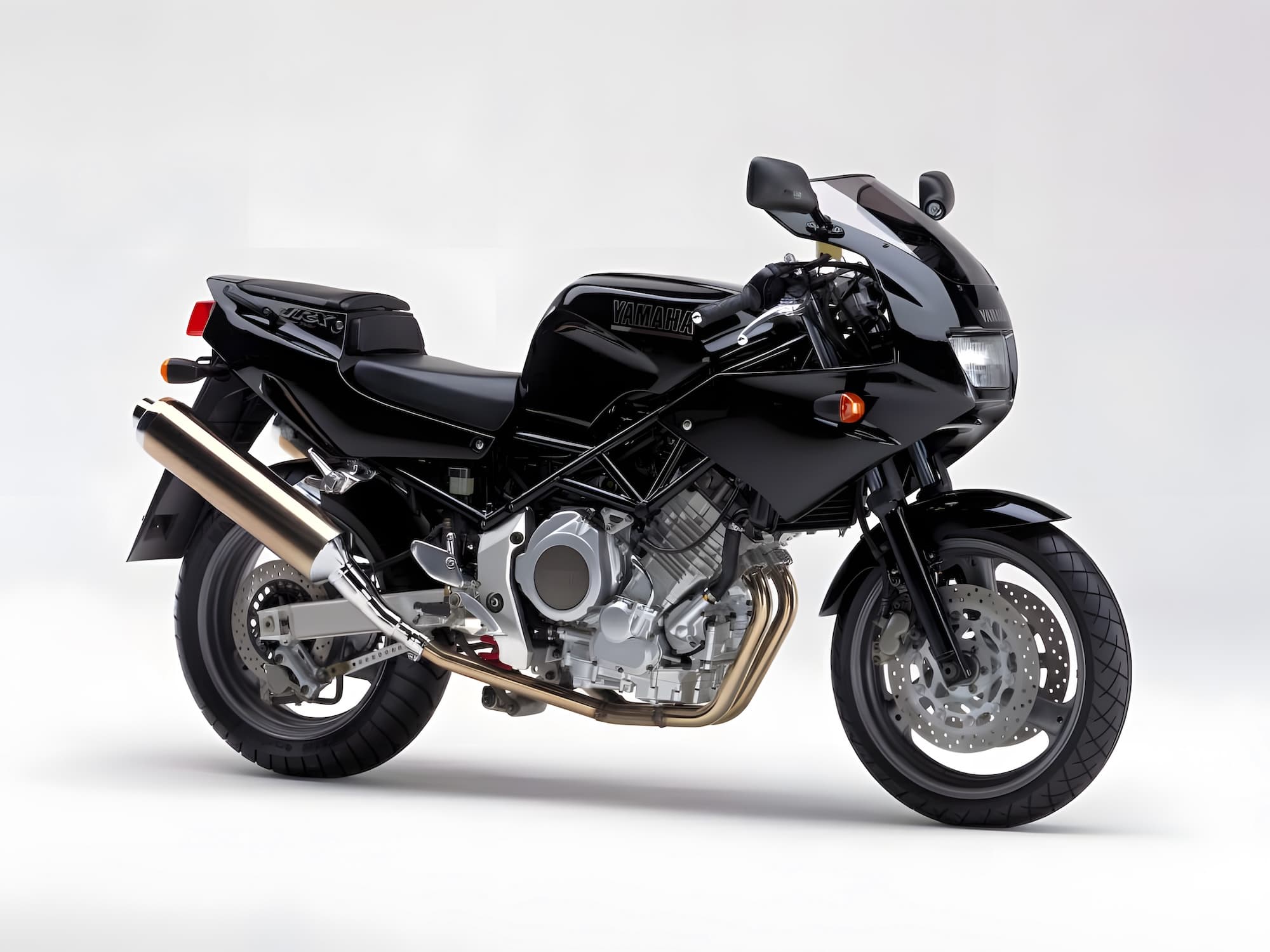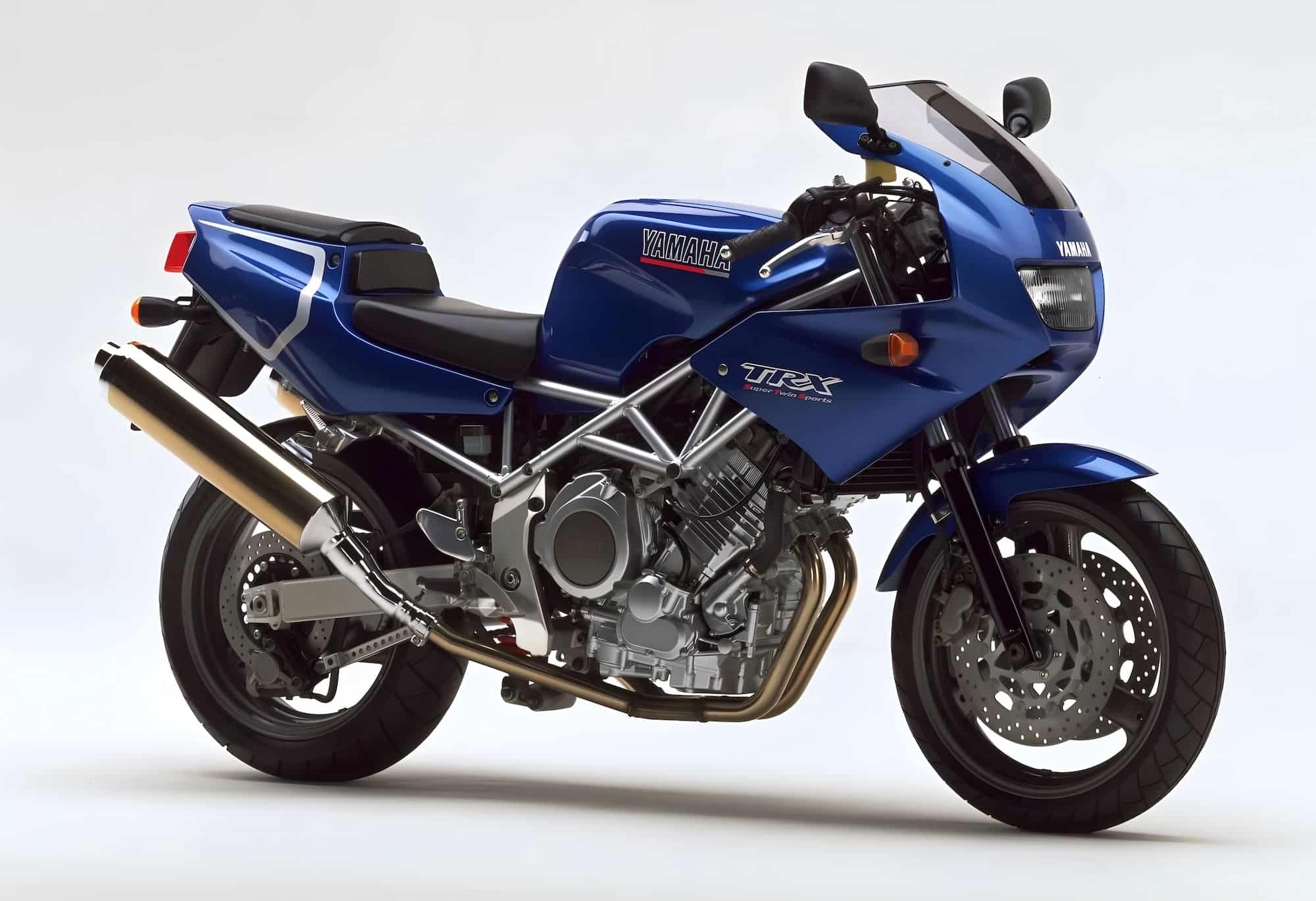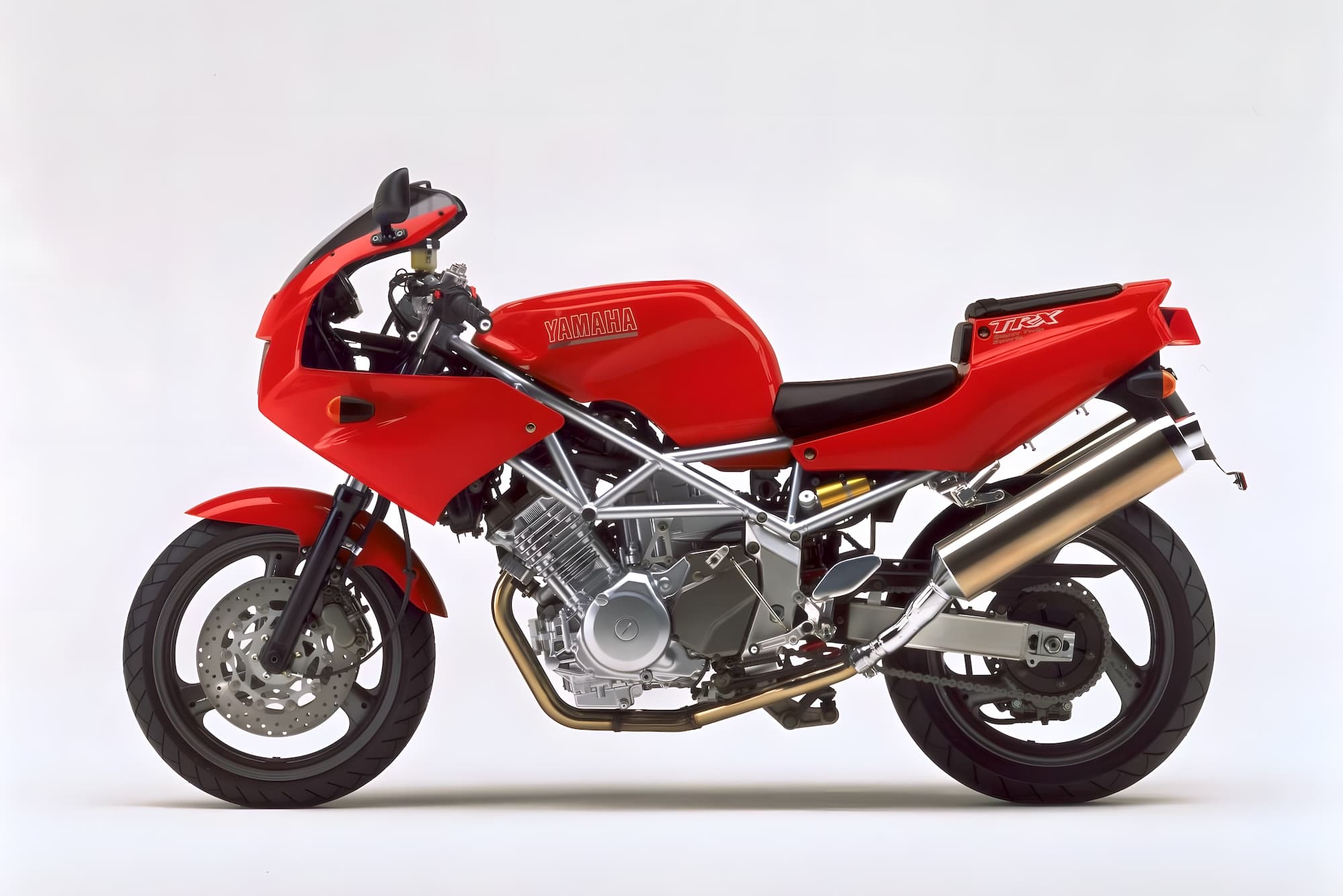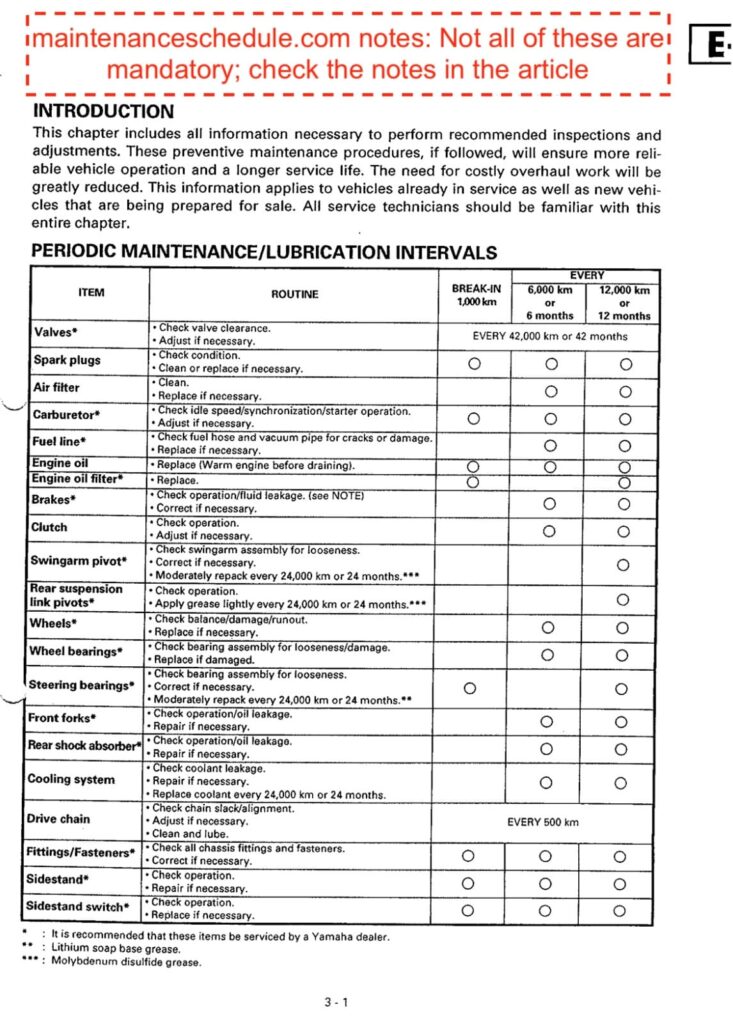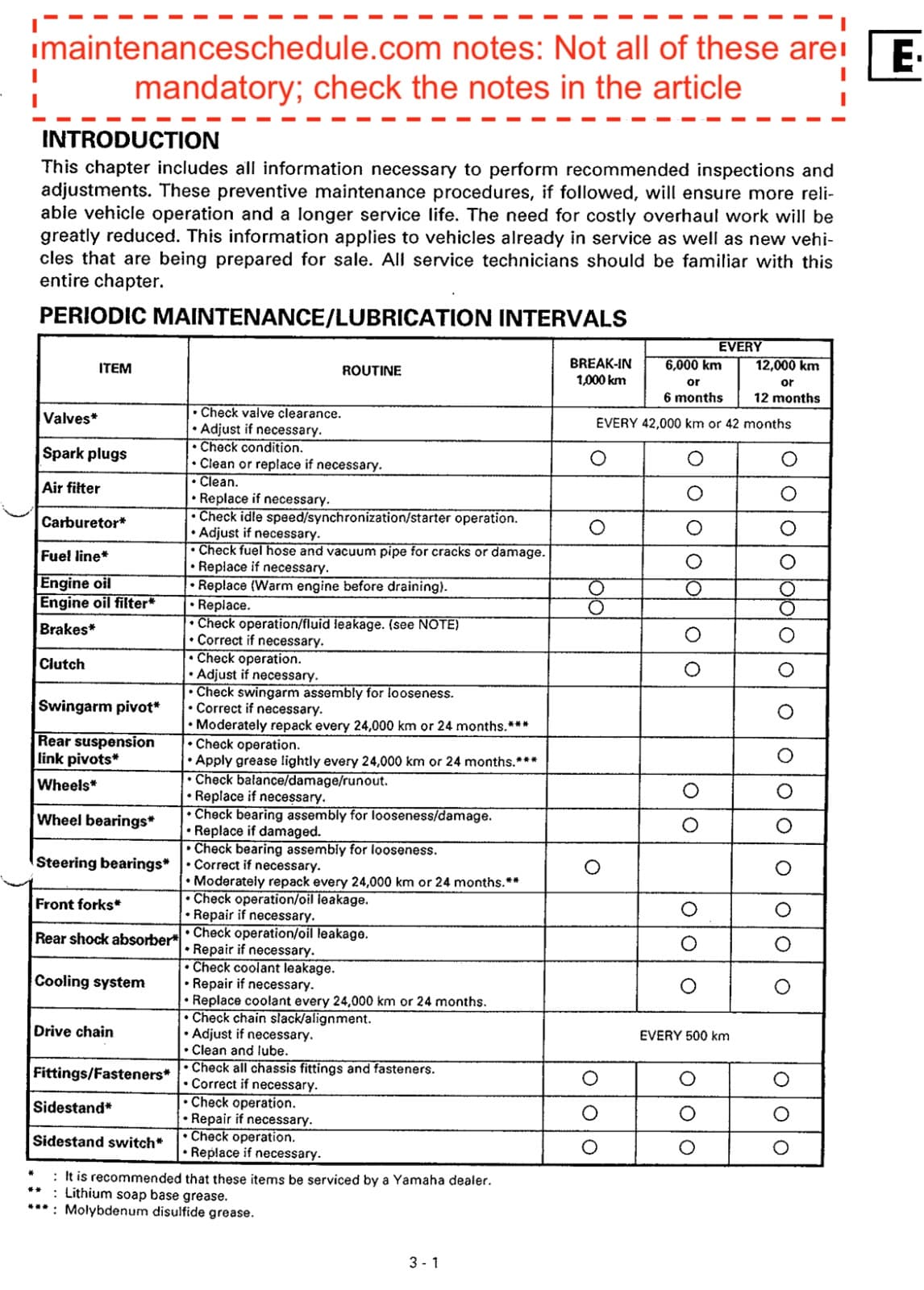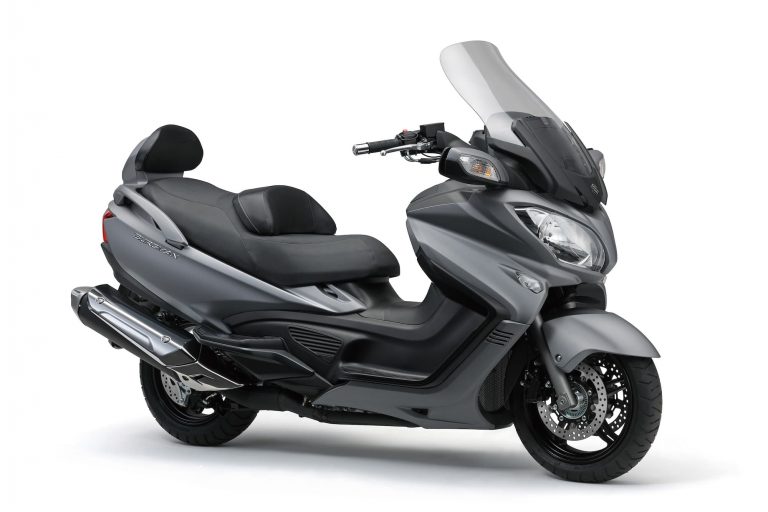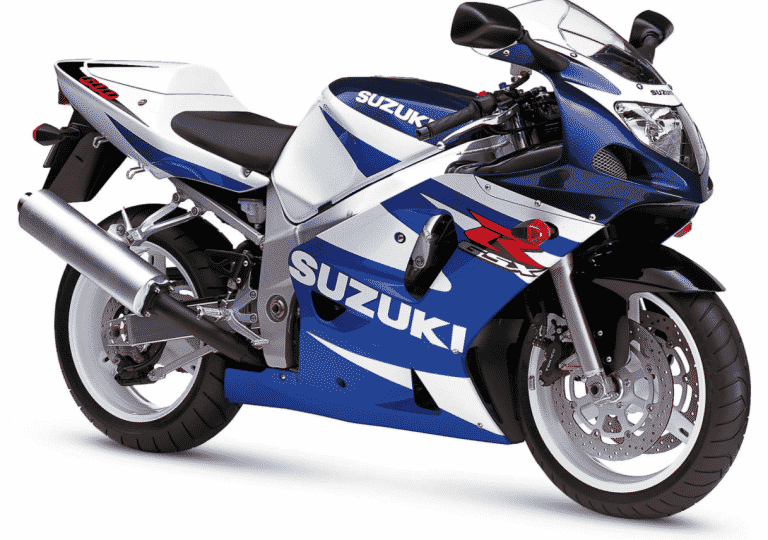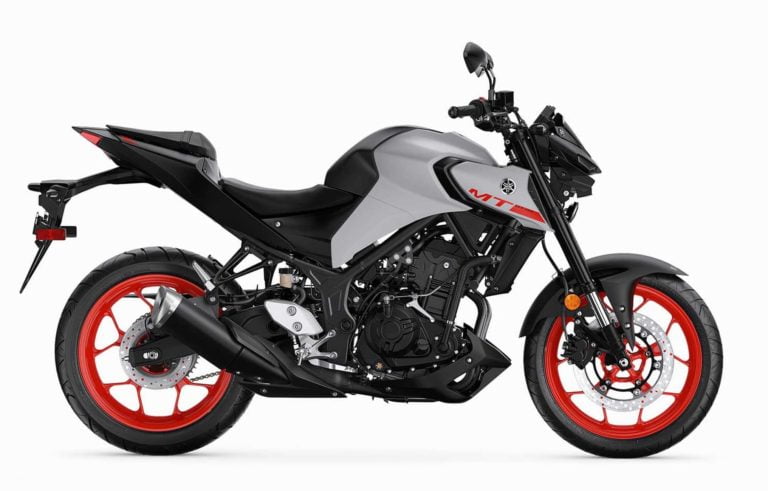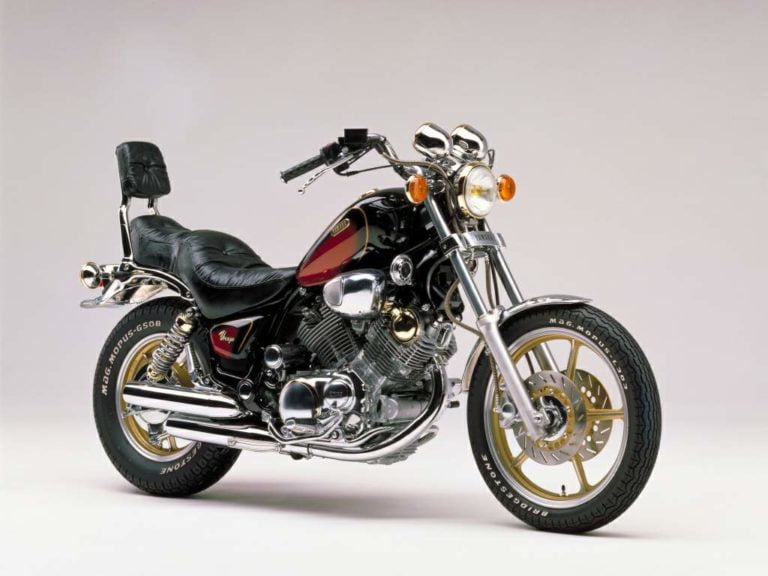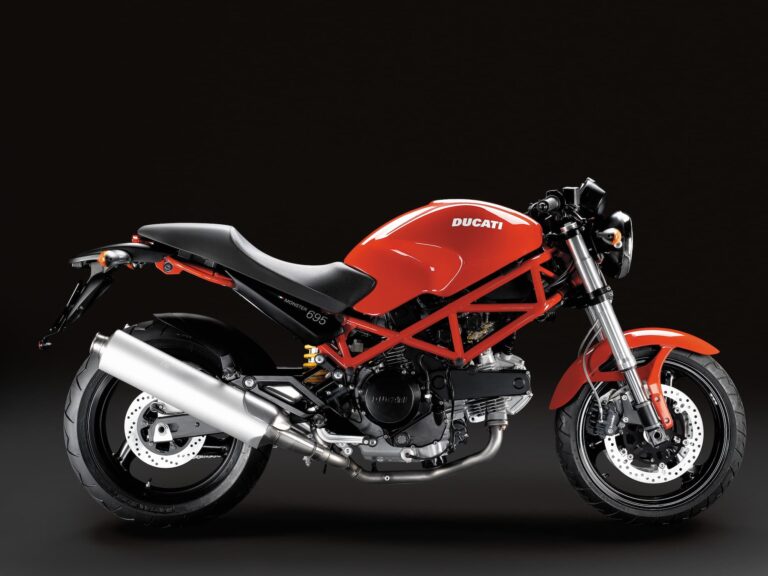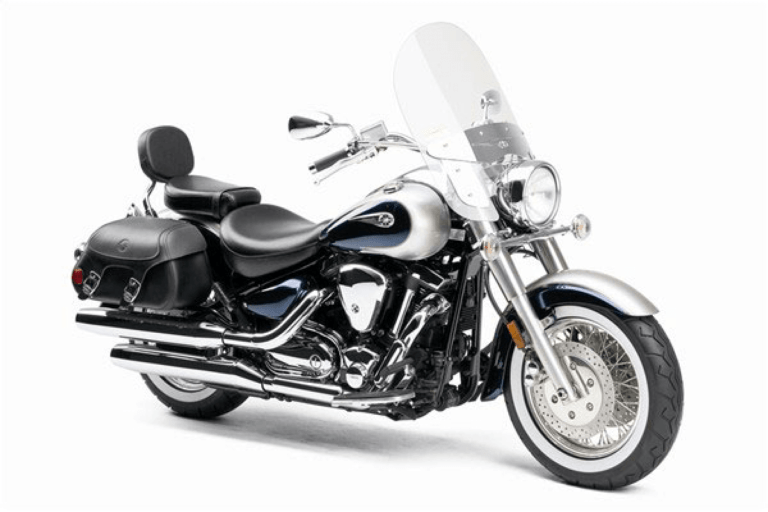Yamaha TRX850 (1996-2000) Maintenance Schedule and Service Intervals Template
This is the maintenance schedule and service intervals for the Yamaha TRX850. It’s from the service manual, with some reference points from service guides and parts catalogues.
The Yamaha TRX850 is a sport bike with an 849 cc liquid-cooled parallel-twin engine with five valves per cylinder, which Yamaha was doing at the time. It has a few distinctive features, like a trellis frame (it was the style at the time!), a sporty but comfortable riding position, and 270-degree crankshaft that gives the engine a v-twin like sound. It seems aimed at the Ducati Supersport 900, but that is an air-cooled bike with a dry clutch. (However, the two bikes share the same carburettors!)
The TRX850 borrows an engine from the more sedate commuter bike the TDM850, but strips it back to a lighter and much more attractive package.
The TRX850 is a modern cult classic, and many owned are still in good condition — if they haven’t been cafe’d out.
This site has links for things like oil and spark plugs from which we earn a commission (which unfortunately nobody can save, not even us). If you appreciate this work, then please use those links. Thanks!
Yamaha TRX850 Service Intervals
Overall, the Yamaha has minor oil change service intervals of 4000 mi / 6000 km or every six months. At every minor service, change the oil, check the spark plugs and air filter (cleaning the air filter if necessary), and do a host of other checks.
You only need to change the oil filter every 8000 miles / 12000 km or year.
The major service interval is every 26000 miles / 42000 km, at which point you have to check the valve clearances and adjust them if necessary. Yamaha specified an “every 42 month” (3.5 years) service interval on the valves, but that isn’t something manufacturers do anymore, as time doesn’t affect clearances.
The Yamaha TRX850 has a dual overhead camshaft with valve pads under each lifter bucket, so the valve adjustment process is a little complex. However, it’s not hard, and is the same as most other motorcycles of this design.
Remember to regularly check the oil level, change the brake fluid, and keep the chain lubed.
What you need to service a Yamaha TRX850
To service your Yamaha motorcycle, you need some basic motorcycle maintenance tools.
Apart from that, you need the following consumables specific to your motorcycle.
| Part | Yamaha Spec |
|---|---|
| Engine oil | Yamaha recommends 10W-40 oil of API service SG or higher, or JASO standard MA. You may also opt for a different oil, depending on the range of temperatures you ride in. Yamaha recommends Yamalube 10W-40. 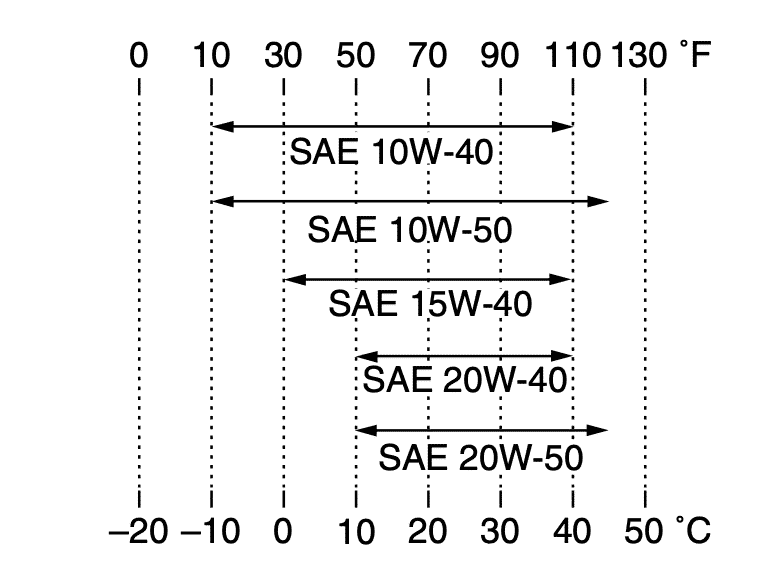 The service manual recommends 10W-30, but that was from 30 years ago; oil has improved and 10W-40 is a common recommendation for Yamaha motorcycles. |
| Oil filter | Yamaha’s OEM part number is 5GH-13440-60-00, or HifloFiltro HF204RC for a high-quality and affordable alternative. |
| Air filter | A common swap for the TRX850 air filter is the K&N YA-8596. |
| Spark plugs | Stock spark plug is an NGK DPR8EA-9. |
| Brake fluid | Spec is to use DOT-4 brake fluid, e.g. Castrol DOT 4. |
| Chain maintenance | The chain needs to be lubricated quite often (especially if it gets wet or dirty). A Motul chain care kit is a good investment. |
| Brake pads | OEM part numbers for the brake pads are… You can also opt for EBC HH pads, a well-liked alternative to stock pads, for better bite, feel and pad life, though they will also wear your rotors faster (as will all sportier pads). Parts are FA123HH at the front (2 pairs) and FA088HH at the rear (one pair). |
| Cable maintenance | Use Protect all cable life or another cable lubricant to lubricate your cables. |
| Grease | Use a lithium soap-based grease for all the important greasing points. |
| Battery | Standard Yuasa YTX12-BS battery |
Maintenance Schedule for the Yamaha TRX850
Below is the full maintenance schedule for the Yamaha TRX850, adapted from the service manual.
The maintenance schedule below has been simplified in a few ways. For example, notes about what items to get checked at a dealer are omitted. And some parts have been modernised — e.g. there’s no need to check the valve clearance every 3.5 years if the bike hasn’t been ridden.
| mi x 1000 | 4 | 8 | 12 | 16 | |
|---|---|---|---|---|---|
| km x 1000 | 6 | 12 | 18 | 24 | Every |
| Standard maintenance checklist (see below) — Perform all items | ✓ | ✓ | ✓ | ✓ | 6 months |
| Engine oil — Change | ✓ | ✓ | ✓ | ✓ | 6 months |
| Oil filter — Change (oil filter cover bolts are 10 Nm / 7 lb-ft) | ✓ | ✓ | Year | ||
| Air filter — Check. Clean or replace as necessary | ✓ | ✓ | ✓ | ✓ | |
| Spark plugs — Check (target gap 0.8-0.9mm). Clean or replace as necessary. | ✓ | ✓ | ✓ | ✓ | |
| Valve clearances — Check / Adjust | 26000 miles / 42000 km | ||||
| Brake fluid — Change | 2 years | ||||
| Check the swingarm assembly for looseness. Correct if tighten/adjust as necessary. | ✓ | ✓ | Year | ||
| Check the rear suspension link pivots, and apply molybdenum disulfide grease. | ✓ | 2 years | |||
| Repack swingarm bearings with molybdenum disulfide grease. | ✓ | 2 years | |||
| Check steering bearings for looseness. Tighten if necessary, and repack moderately with lithium soap-based grease. | ✓ | 2 years | |||
| Coolant — Change | ✓ | 4 years | |||
Regular Inspection Checklist
Below is the inspection checklist for the Yamaha TRX850. Be sure to do this according to the schedule above.
| Yamaha TRX850 Regular Maintenance Checklist |
|---|
| Check idle speed and synchronization. Adjust as necessary. (Target idle speed is 1050-1250 rpm) |
| Check fuel lines and vacuum pipe for cracks or damage. Replace as necessary. |
| Check and adjust throttle cable for free play (3-7mm) |
| Check clutch. Adjust as necessary. (Target free play: 10-15mm) |
| Check wheels for balance, damage, or runout. Replace as necessary. |
| Check wheel bearings for looseness/damage, and replace as necessary |
| Check front forks for correct operation and leakage. Replace if necessary. |
| Check rear shock for operation / leakage. Replace if necessary. |
| Check cooling system for leakage. |
| Check fittings and fasteners, and tighten as necessary. |
| Check sidestand and sidestand switch for smooth operation. |
Drive Chain Maintenance
As the TRX850 has a chain drive, you need to regularly clean, lube, and tighten it, and occasionally replace it. Yamaha recommends every 300 mi / 500 km, but this is dependant on your riding style and the conditions in which you ride.
Check the chain slack by checking the free play of the chain midway between the sprockets.
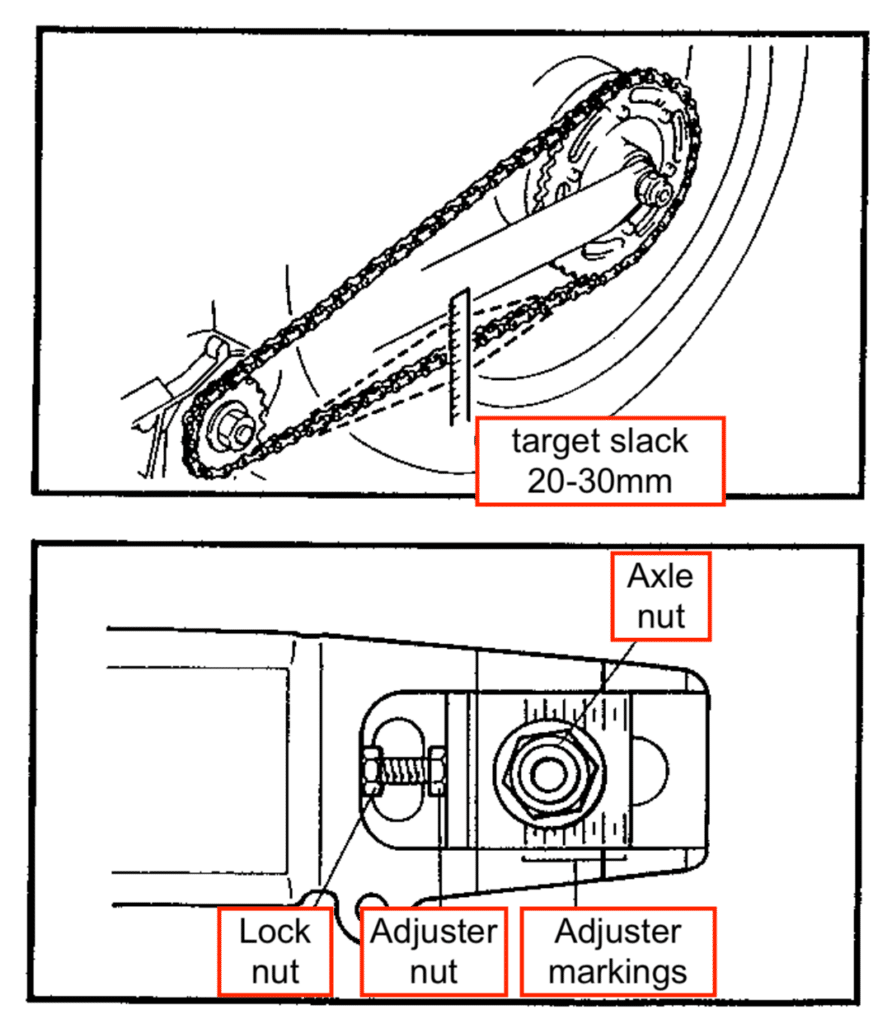
Target drive chain slack for the TRX850 is 20-30mm (0.8-1.2 inches).
To adjust the chain slack on the TRX850, follow the procedure below. As for measuring chain slack, make sure that the motorcycle is on a level surface on its kickstand, in neutral, with no weight on it (no saddlebags / luggage).
- Loosen the rear axle and the adjuster lock nuts on either side of the axle.
- Turn the adjuster nuts to tighten (or loosen) the chain. Keep checking the chain tension to see if it has come within spec (20-30mm).
- Keep an eye on the adjuster alignment marks on either side of the axle. Make sure that the adjustment is to the same point.
- When you’re done, tighten the axle to 117 Nm / 86, and tighten the adjuster lock nuts.
- Re-check the chain slack again to make sure it’s still within spec.
Tire sizes and pressures for the Yamaha TRX850
The manual specifies the following tire sizes and pressures (cold).
| Tyre | Size | Tyre pressure (cold) |
|---|---|---|
| Front | 120/60 ZR17 | 225-250 kPa / 2.25-2.5 bar / 33-36 psi |
| Rear | 16060 ZR17 | 250-280 kPa / 2.5-2.8 bar / 36-42 psi |
About the Yamaha TRX850
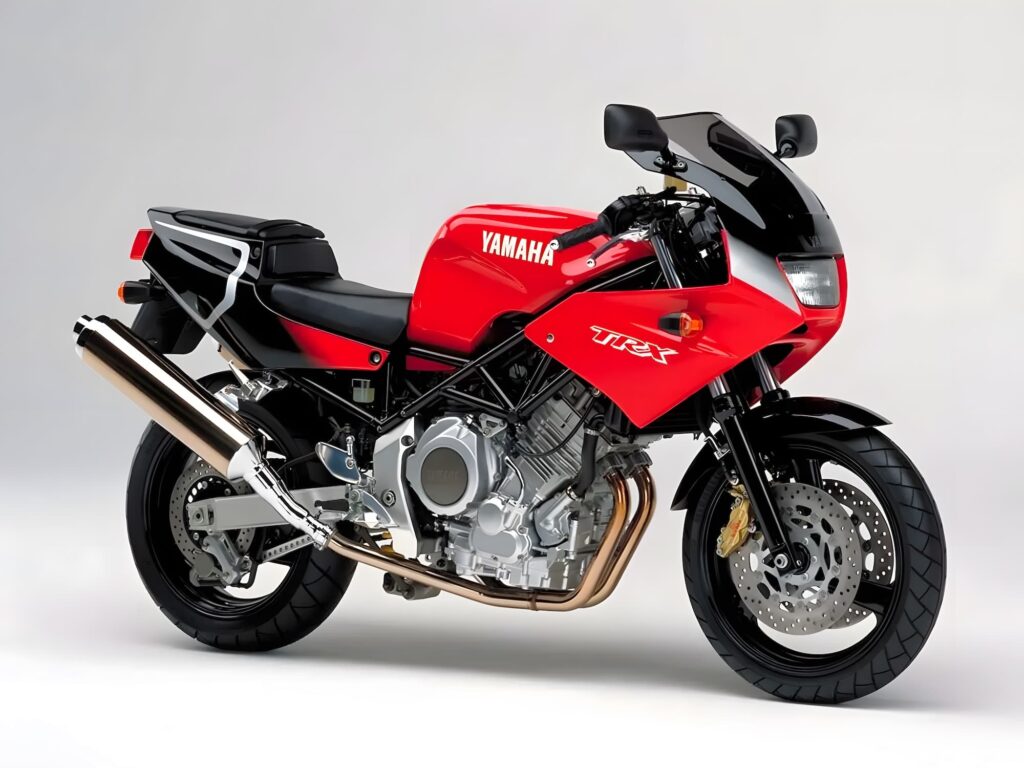
The Yamaha TRX850 is an everyday sport bike with a parallel twin engine, twin carburettors, dual overhead camshafts and five valves per cylinder.
It’s hard not to look at a TRX850 and think they were going after Ducati. So much of it screams Ducati, including the exposed trellis frame (which also graced the Suzuki SV650, another pretender to the Monster’s crown), the half fairing, and the burble from the parallel twin’s exhaust. Heck, the TRX850 even shares a carburettor — two Minkuni BDST38s — with the Ducatis of its generation! (Which is a good thing… because the company means that parts are still plentiful, decades later.)
But the TRX850 stands on its own. It has so much going for it that makes it unique.
Firstly, it’s a Yamaha, which brings with it Japanese reliability. Yes, I know, any bike is reliable as long as you maintain it. But the TRX850 has a liquid-cooled engine with valve service intervals as wide as any modern Yamaha motorcycle, like the CP2 in the Yamaha MT-07, for example, another parallel twin praised for its reliability and fun factor.
Secondly, there is also just less to do on the Yamaha. There’s only one cylinder head, which means getting to the valves is a lot easier, when you eventually have to do it. And there are no belts to replace! The Ducatis of the time (and up to now on some models) have belts that you have to replace basically every time you remember that damn it, I haven’t replaced the belts in a while.
The engine is what really sparkles in the Yamaha TRX850 though. It doesn’t just try to sound like a V-twin — it really does. They sound fantastic. Part of the unique character is the five valve per cylinder engine, which gives many Yamahas of the day a unique vibe.
The suspension and brakes of the TRX are fine, but this isn’t their high-end sport bike. Still, you get decent adjustability at the front AND the rear, and they’re comfortable enough for smooth roads.
As for brakes, there are twin 320 mm discs with four-piston calipers up front. Some people upgrade the rear shock and even bung on a front end from an R1, or maybe just the brakes. Japanese TRX models came with Brembo calipers, but these are only available outside Japan as grey imports.
Finally, the TRX has always been a good buy. They didn’t sell too well, so they were cheap even when new. And as used bikes, they’re not collector’s items — just appreciated by the right crowd.
It is still a good-looking bike. Trellis frames never went out of style, other than the fact that while lightweight, they’re heavier than they need to be. A modern full-power MT-07 or YZF-R7 is undoubtedly a better bike in every way — more power, more reliability, less things to fiddle with (fuel injection!). But the TRX gives you twin gauges and classic looks. Plus, you can rebuild a carburettor at home.
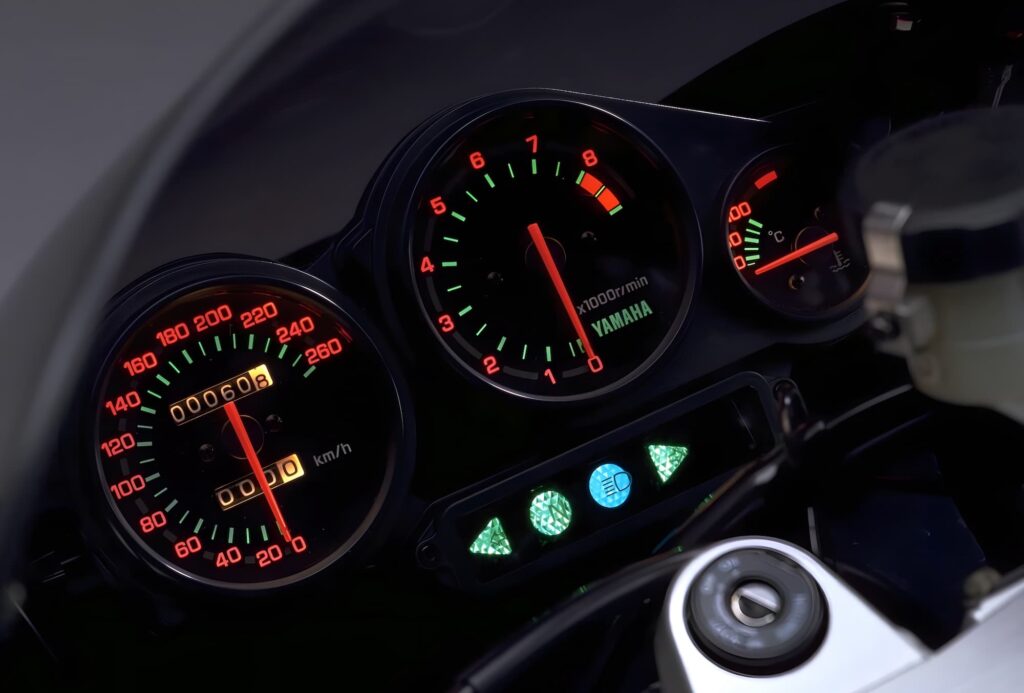
Being older bikes that were never the premium sellers (like the R6 and R1 which came at the tail end of the TRX’s time), they might not be in good condition. If you get one, I’d pretty much assume you have to do things like flush the brake fluid and coolant, and maybe even change the coolant.
References — Manual for the Yamaha TRX850
The above maintenance schedule was transcribed from the manual for the Yamaha TRX850, with modifications and updates made.
You can download the owner’s manual from Yamaha’s website here.
